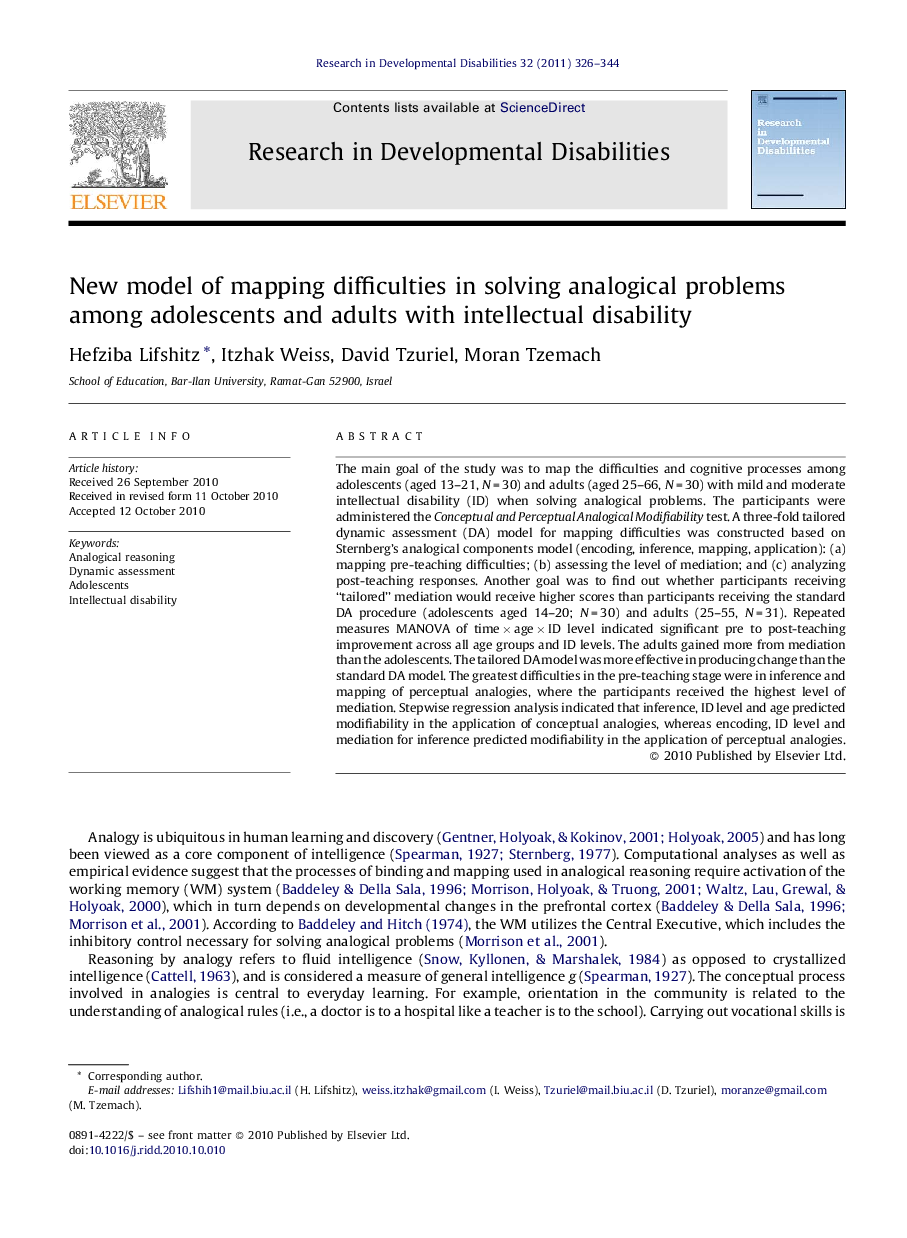| کد مقاله | کد نشریه | سال انتشار | مقاله انگلیسی | نسخه تمام متن |
|---|---|---|---|---|
| 372204 | 621963 | 2011 | 19 صفحه PDF | دانلود رایگان |

The main goal of the study was to map the difficulties and cognitive processes among adolescents (aged 13–21, N = 30) and adults (aged 25–66, N = 30) with mild and moderate intellectual disability (ID) when solving analogical problems. The participants were administered the Conceptual and Perceptual Analogical Modifiability test. A three-fold tailored dynamic assessment (DA) model for mapping difficulties was constructed based on Sternberg's analogical components model (encoding, inference, mapping, application): (a) mapping pre-teaching difficulties; (b) assessing the level of mediation; and (c) analyzing post-teaching responses. Another goal was to find out whether participants receiving “tailored” mediation would receive higher scores than participants receiving the standard DA procedure (adolescents aged 14–20; N = 30) and adults (25–55, N = 31). Repeated measures MANOVA of time × age × ID level indicated significant pre to post-teaching improvement across all age groups and ID levels. The adults gained more from mediation than the adolescents. The tailored DA model was more effective in producing change than the standard DA model. The greatest difficulties in the pre-teaching stage were in inference and mapping of perceptual analogies, where the participants received the highest level of mediation. Stepwise regression analysis indicated that inference, ID level and age predicted modifiability in the application of conceptual analogies, whereas encoding, ID level and mediation for inference predicted modifiability in the application of perceptual analogies.
Research highlights▶ The main goal of the study was to map the difficulties and cognitive processes among adolescents (aged 13–21, N = 30) and adults (aged 25–66, N = 30) with mild and moderate intellectual disability (ID) when solving analogical problems. ▶ Another goal was to find out whether participants receiving “tailored” mediation would receive higher scores than participants receiving the standard DA procedure (adolescents aged 14–20; N = 30) and adults (25–55, N = 31). ▶ Repeated measures MANOVA of time × age × ID level indicated significant pre to post-teaching improvement across all age groups and ID levels. ▶ The tailored DA model was more effective in producing change than the standard DA model. The greatest difficulties in the pre-teaching stage were in inference and mapping of perceptual analogies, where the participants received the highest level of mediation.
Journal: Research in Developmental Disabilities - Volume 32, Issue 1, January–February 2011, Pages 326–344